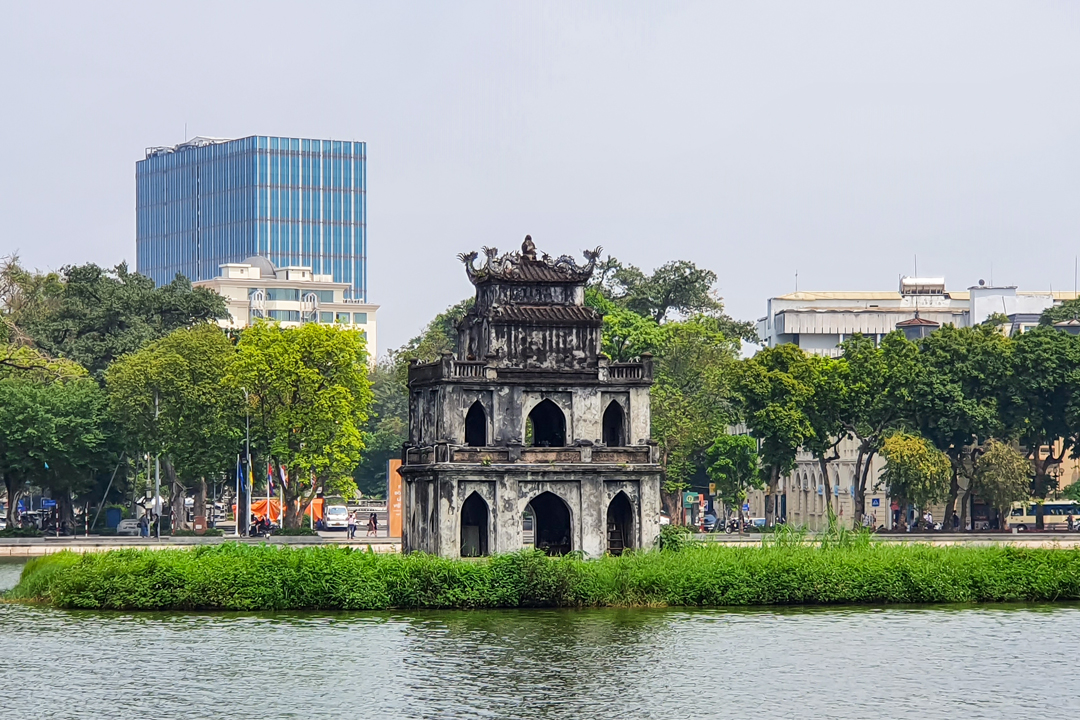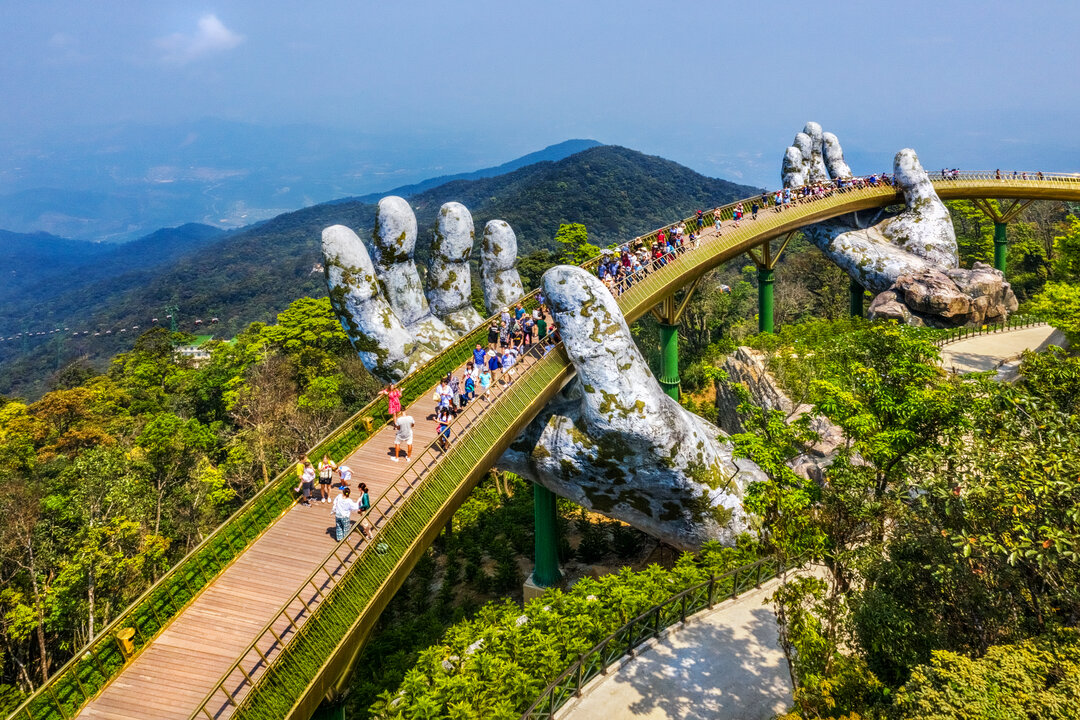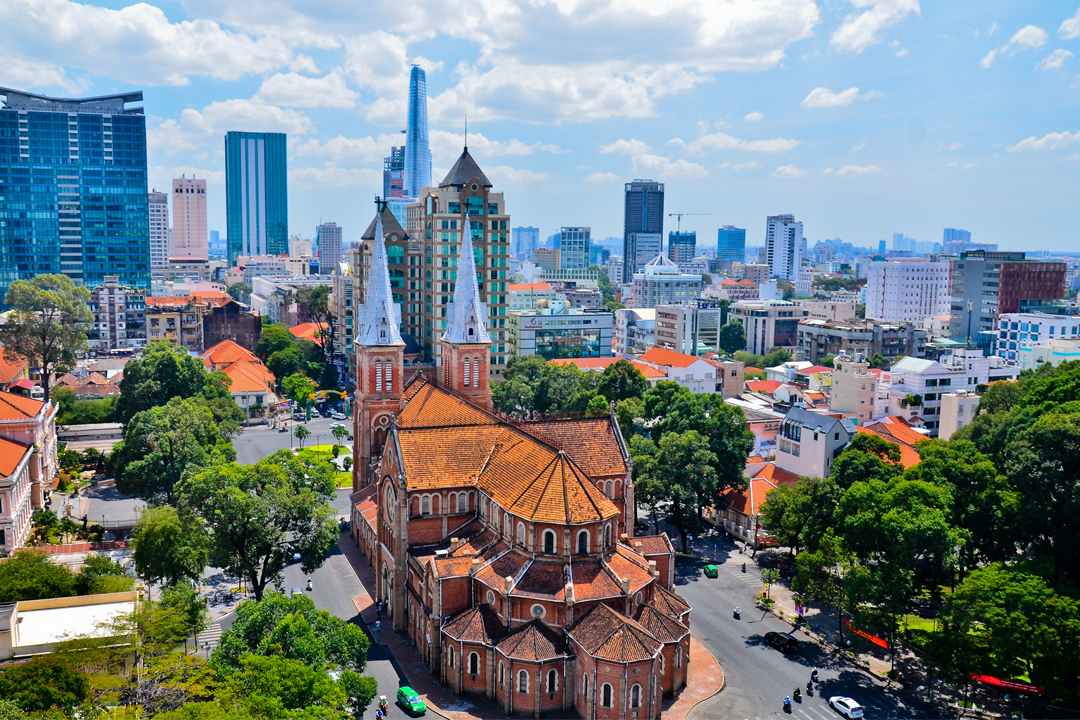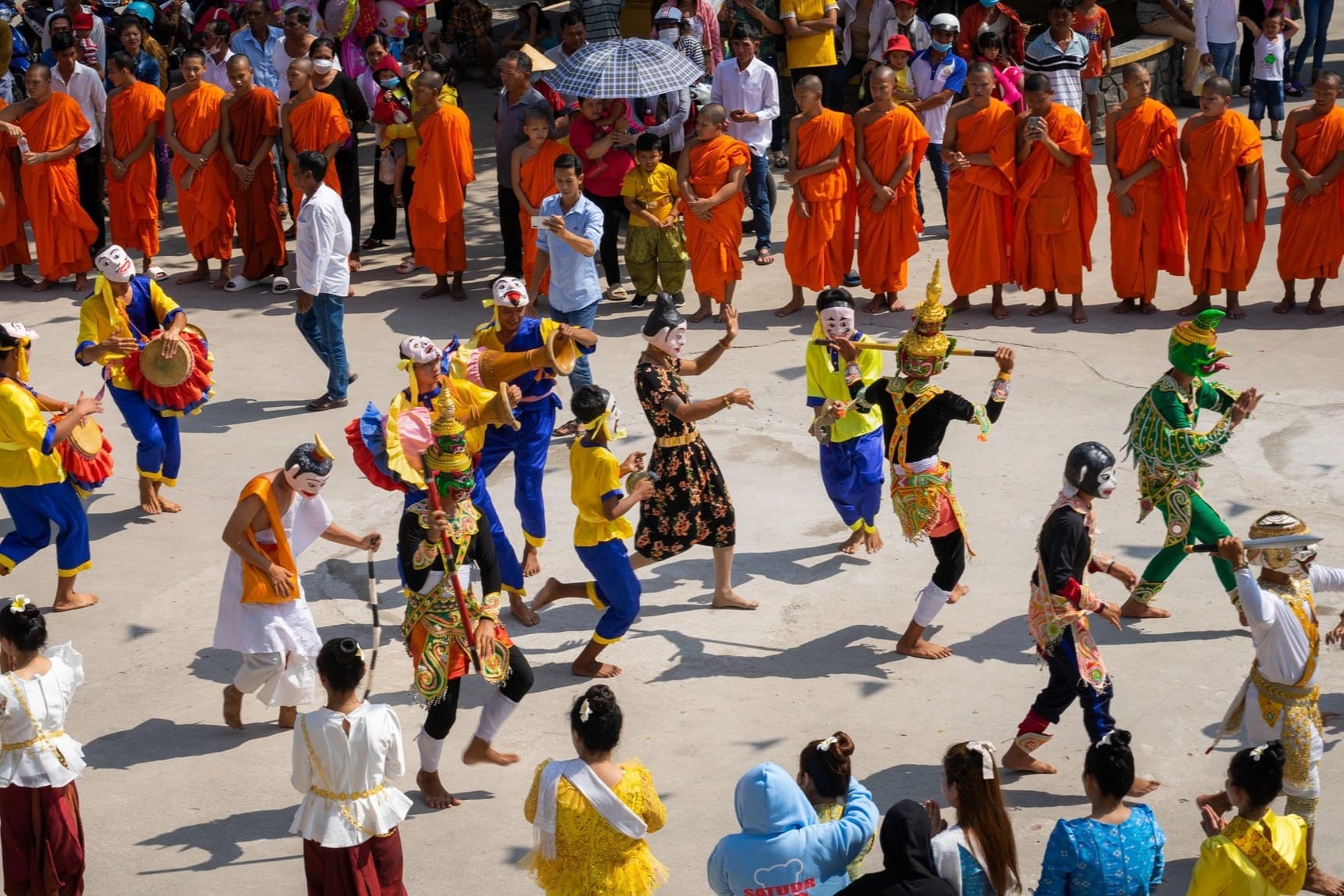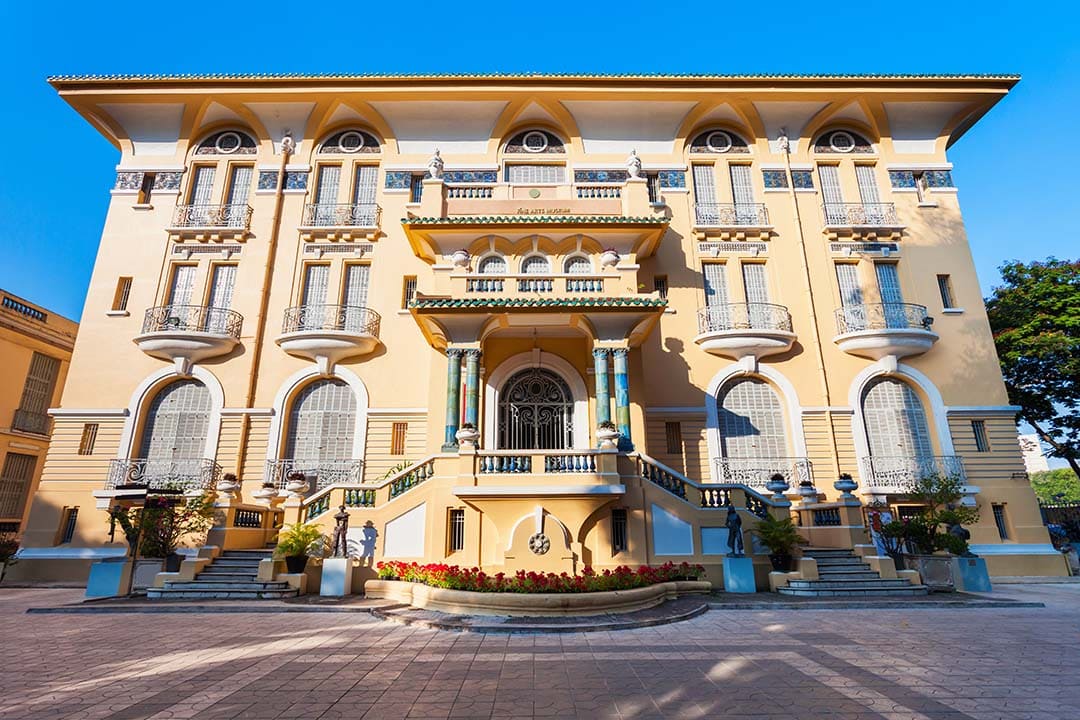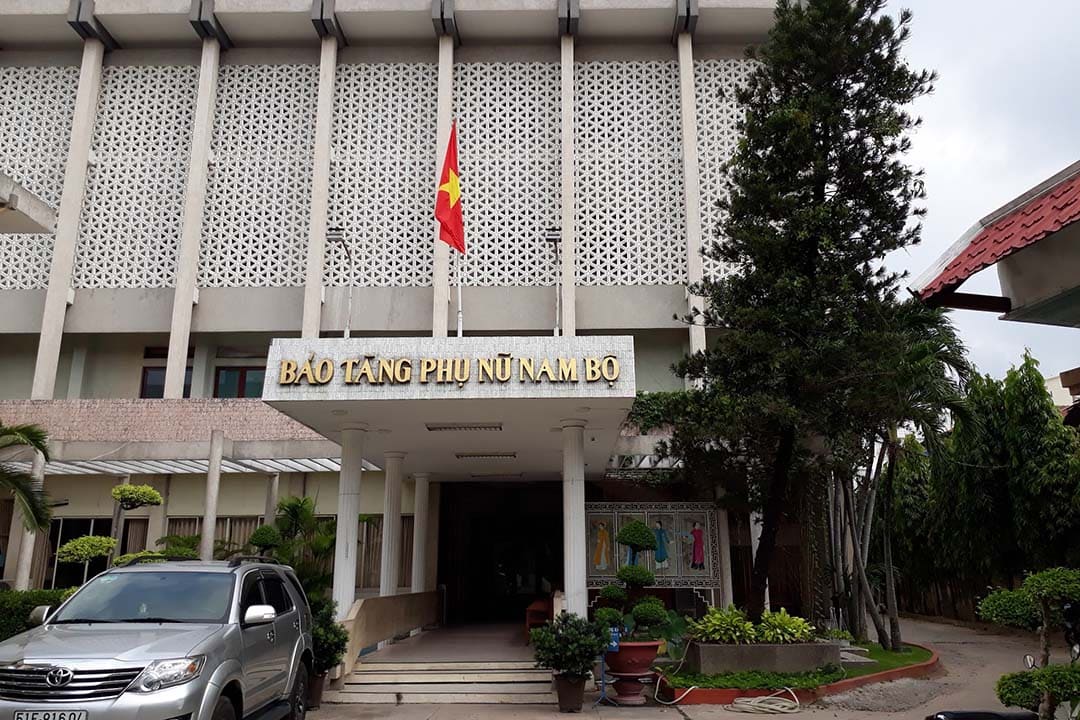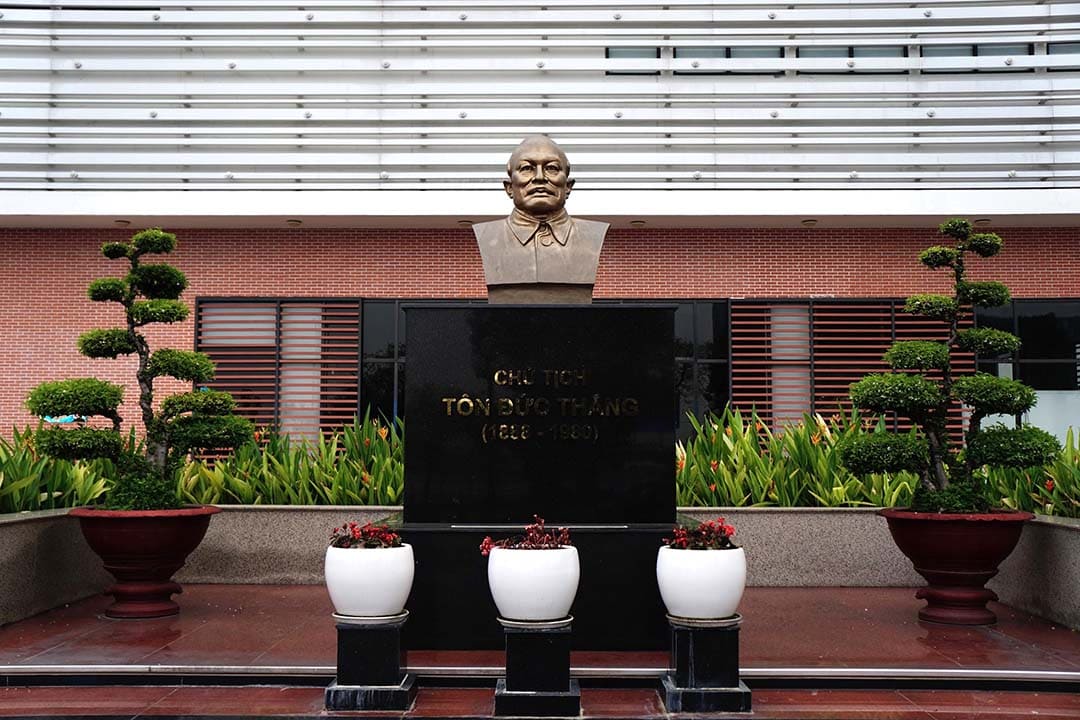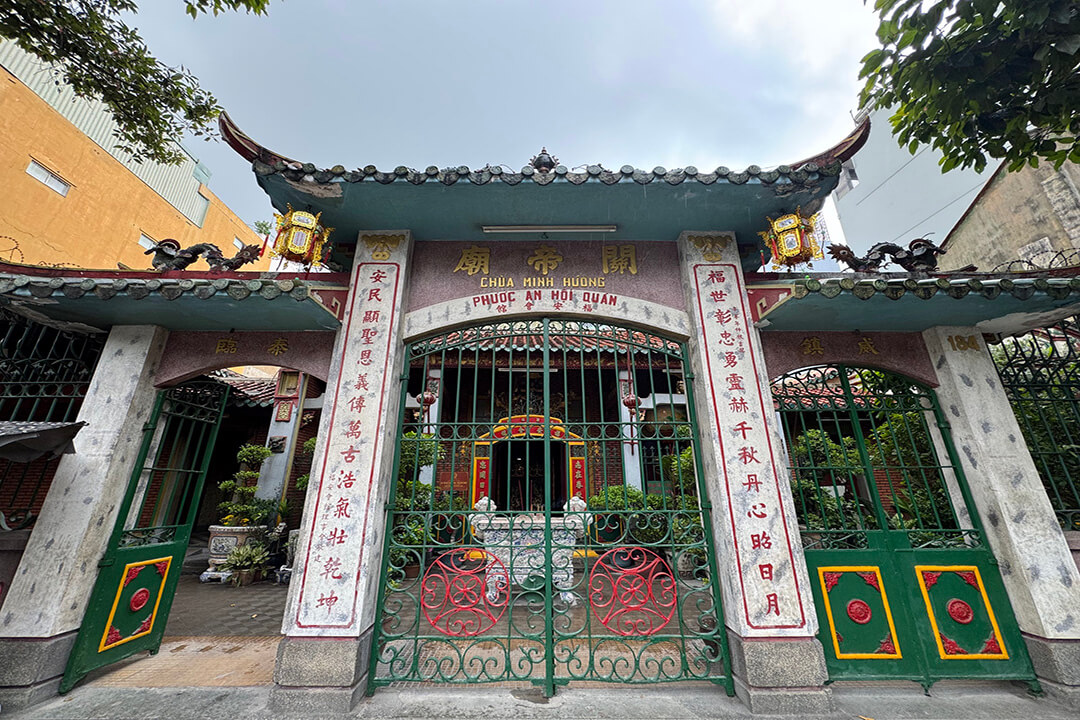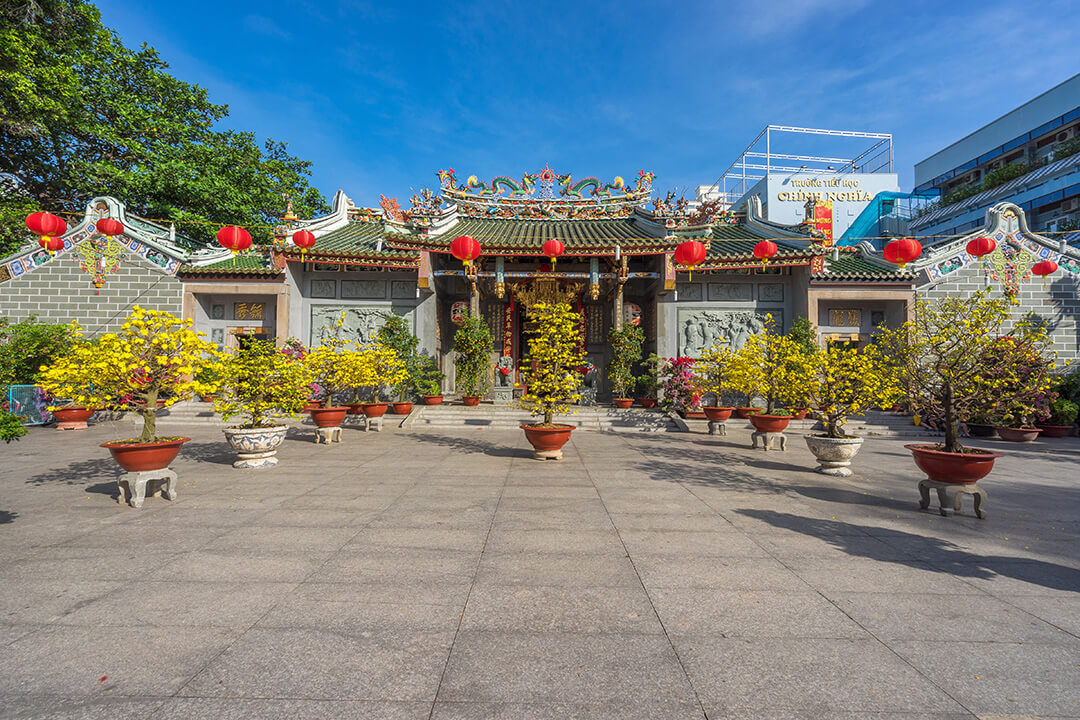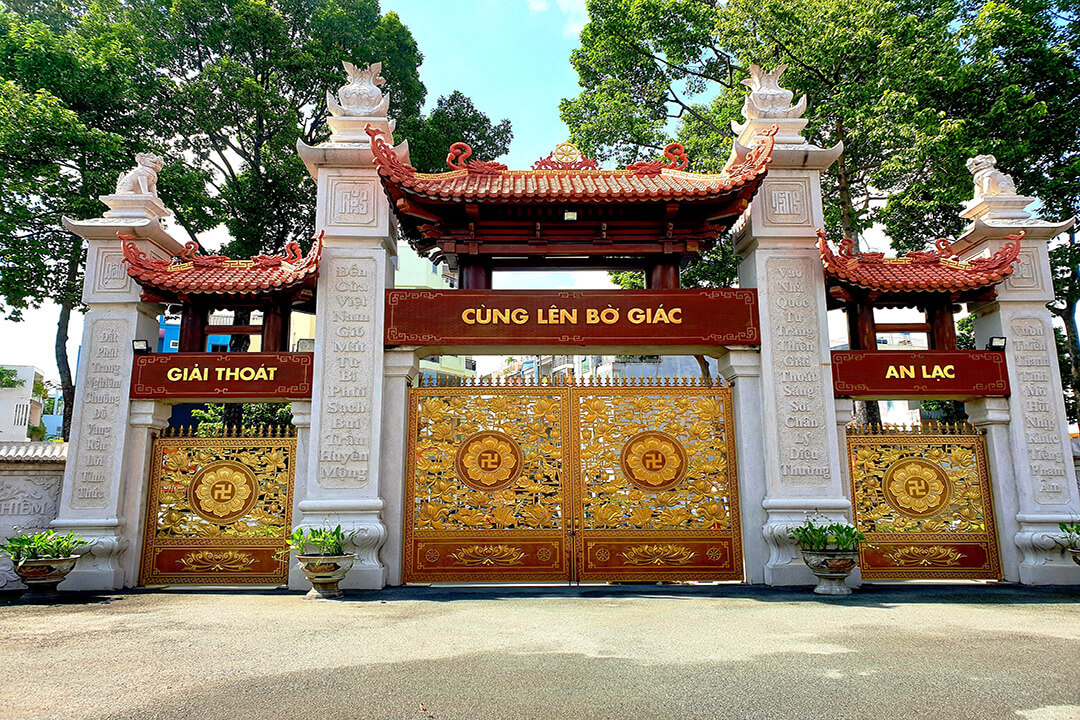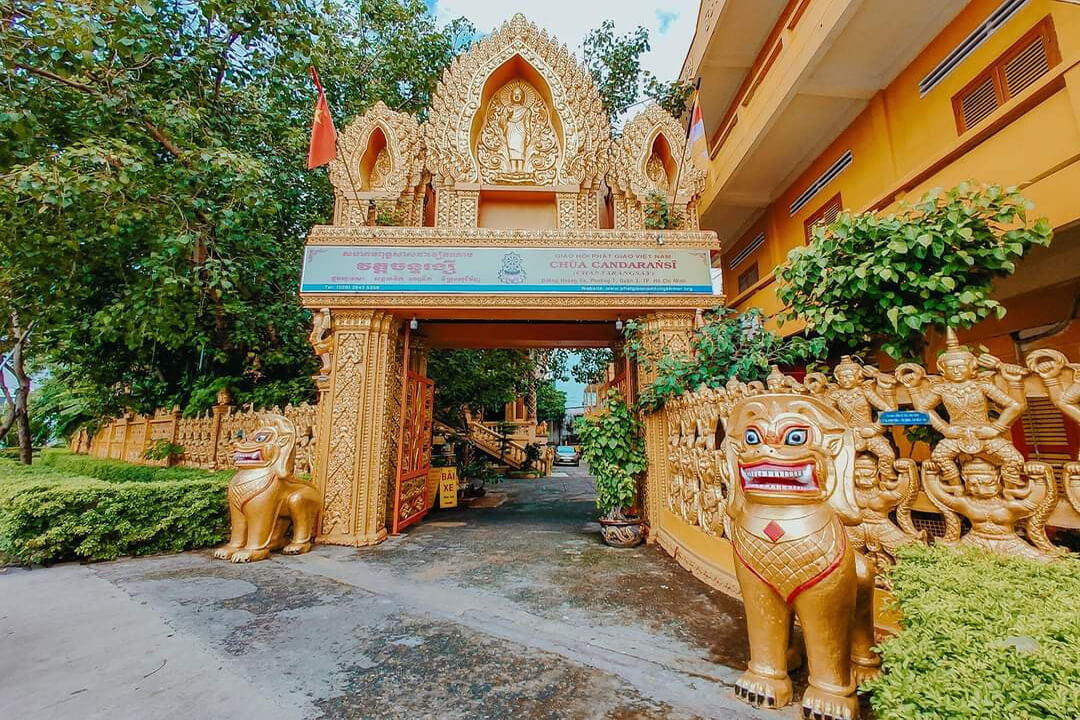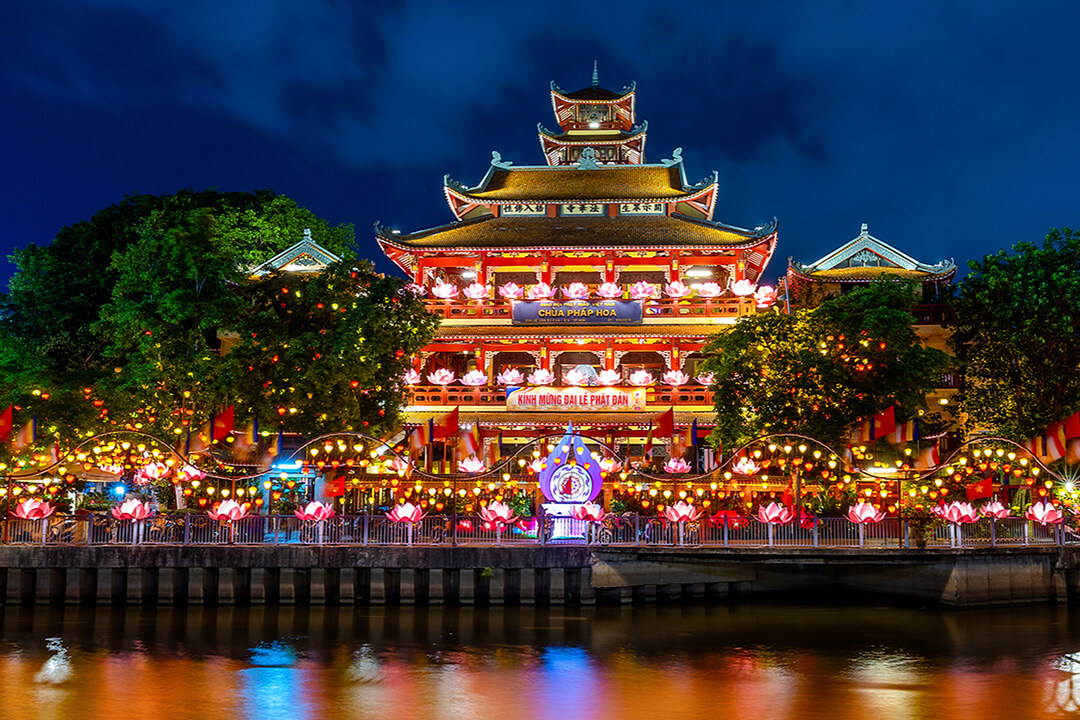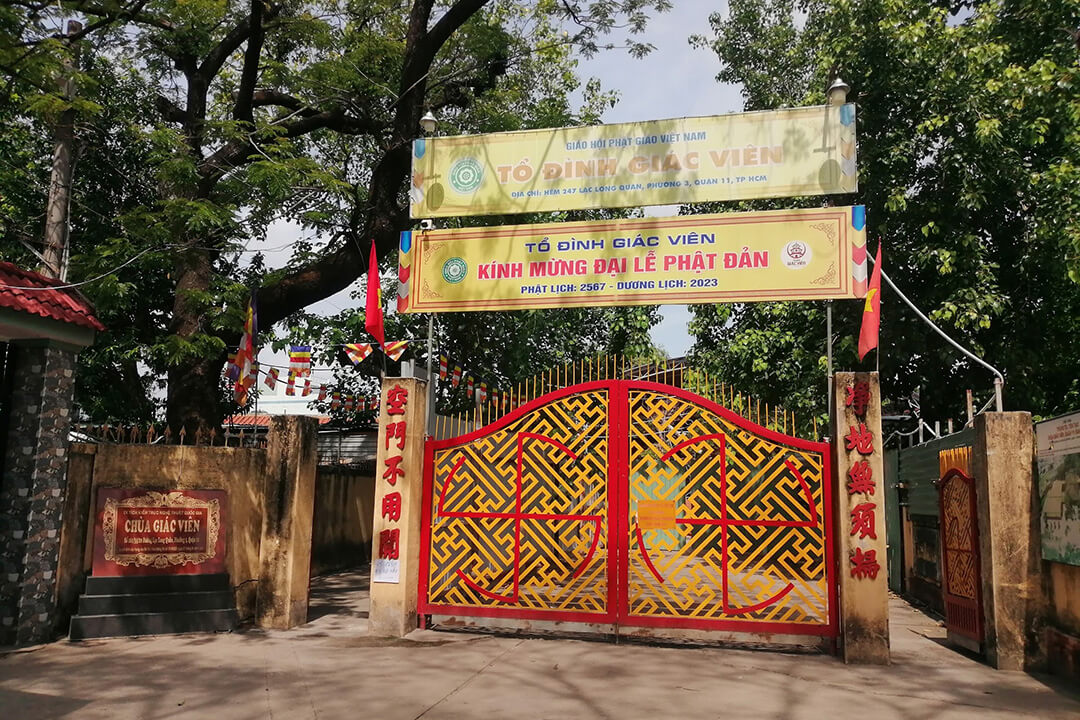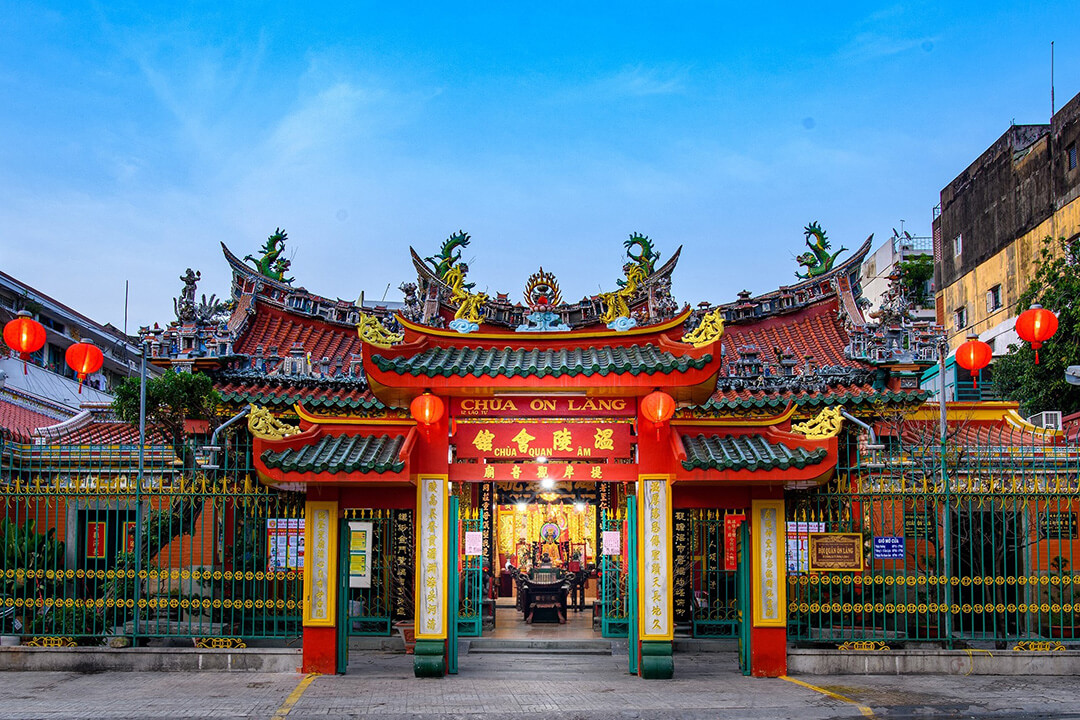Nov - 03 - 2025
Hidden away from the vibrant rush of Ho Chi Minh City, Buu Long Pagoda shines as a tranquil gem amid the urban chaos. Blending majestic architecture with serene spirituality, this temple offers visitors a sense of peace and reflection, a place that feels both distant and deeply connected to Vietnam’s soul. With GTrip as your trusted companion, discover the history, design, and unforgettable experiences that make this sacred site one of Ho Chi Minh City.
Overview of Buu Long Pagoda
- Address: 81 Nguyen Xien Street, Long Binh Ward (formerly District 9, Thu Duc City), Ho Chi Minh City
- Opening hours:
- Pagoda grounds: 8:00 AM - 6:00 PM daily. However, between 11:00 AM and 2:00 PM, visitors can only tour the outside areas.
- Stupa: 8:00 AM - 10:00 AM and 2:00 PM - 4:00 PM
- Entrance fee: Completely free
- Best time to visit: Our GTrip expert advises visiting early in the morning (8:00 AM - 10:00 AM). During this time, the weather is cooler, the crowds are minimal, and the soft morning light is perfect for photography. An alternative is the late afternoon for a beautiful sunset glow.
Nestled in former Thu Duc City, Buu Long Pagoda is a spectacular Theravada Buddhist sanctuary that provides a welcome and tranquil escape from the urban energy of Saigon. More than just a place of worship, its stunning design was recognized by National Geographic in 2019, which named it one of the ten most beautiful Buddhist structures in the world. This prestigious honor has solidified its reputation as a premier destination for both spiritual pilgrims and curious travelers seeking architectural wonder and a moment of peace.
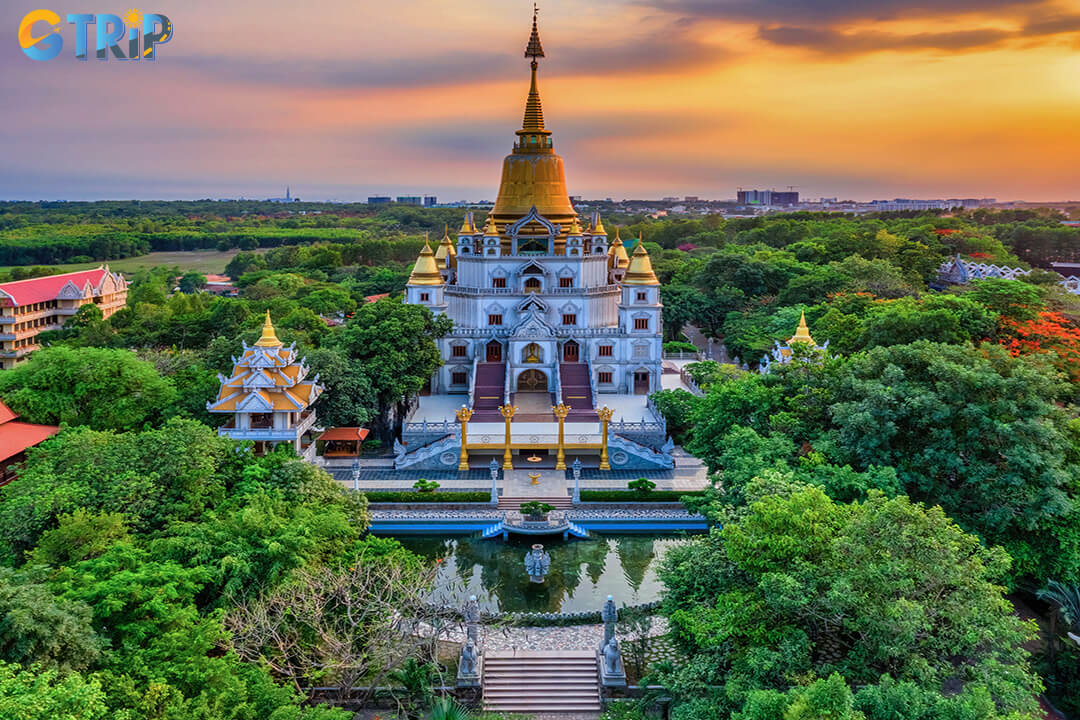
Buu Long Pagoda is celebrated for its breathtaking design named by National Geographic in 2019 as one of the world’s ten most beautiful Buddhist structures
History of Buu Long Pagoda in Ho Chi Minh
The story of the Buu Long Pagoda is one of humble beginnings, dedicated vision, and remarkable transformation. What stands today as a world-renowned architectural marvel began as a simple hermitage over 80 years ago. Its evolution reflects a deep commitment to preserving and propagating Theravada Buddhism in Vietnam. The pagoda's most significant period of growth occurred in the 21st century, culminating in its international recognition. This timeline highlights the key milestones in its journey from a secluded sanctuary to an iconic landmark.
| Date/Period | Event |
|---|---|
| 1942 | The pagoda's origins trace back to a modest hermitage founded by a devout layman, Mr Vo Ha Thuat. He established this small spiritual retreat on the quiet, wooded hill, laying the groundwork for the sanctuary to come. |
| 1958 | Mr Vo Ha Thuat generously donated the hermitage and its surrounding land to Venerable Ho Tong, a respected monastic leader. This donation marked a pivotal moment, as Venerable Ho Tong officially established the Buu Long Patriarchal Monastery, dedicating it to the practice of Theravada Buddhism. |
| 2007 - 2011 | This period marked a major turning point for the pagoda. Under the guidance and ambitious vision of the current abbot, Venerable Thich Vien Minh, a massive restoration and construction project was undertaken. This four-year effort saw the creation of the magnificent main hall, the awe-inspiring Gotama Cetiya stupa, and many other key structures that define the pagoda's landscape today. |
| 2019 | Buu Long Pagoda achieved global acclaim when National Geographic magazine featured it as one of the "world's 10 most beautiful Buddhist works". This prestigious recognition celebrated its unique architectural synthesis and serene atmosphere, placing it firmly on the international travel map. |

Buu Long Pagoda grew into a renowned Theravada sanctuary, honored by National Geographic in 2019 as one of the world’s most beautiful pagodas
The unique architecture of Buu Long Pagoda
Buu Long Pagoda’s stunning architecture blends Indian Theravada grandeur, Thai elegance, and Vietnamese Nguyen motifs, creating a space that feels both exotic and familiar. The result is a space that feels both exotic and familiar, reflecting the shared spirit of Buddhist art across Asia.
Thai architectural influence
Often affectionately nicknamed the "Thai temple in Saigon", Buu Long Pagoda immediately evokes the splendor of Thailand's royal temples. The dominant color scheme of brilliant white walls accented with gleaming, intricate gold spires is a hallmark of contemporary Thai religious architecture. As you gaze at the main stupa, its towering golden spire piercing the blue sky, you'll be reminded of the iconic temples of Bangkok or Ayutthaya. The sharp, multi-tiered roofs and delicate decorative elements that adorn the buildings further enhance this Thai aesthetic. This deliberate design choice creates a visually stunning effect and pays homage to the Theravada Buddhist traditions that are prevalent in Thailand. The result is a structure that feels uniquely elegant and majestic, standing out dramatically from the more traditional pagoda styles found elsewhere in Vietnam.

Buu Long Pagoda dazzles with white walls, golden spires, and Thai-inspired architecture that beautifully honors Theravada Buddhist traditions
The essence of Vietnamese culture
While the Thai influence is immediately apparent, a closer look reveals that the soul of Buu Long Pagoda is deeply rooted in Vietnamese culture. The masterful architects have seamlessly integrated traditional Vietnamese motifs, ensuring the pagoda feels at home on its native soil. You will find exquisite carvings inspired by the art of the Nguyen Dynasty, adorning walls and pillars. Look for the powerful dragon, a symbol of power and good fortune, and the pure lotus flower, a central image in Vietnamese Buddhism representing enlightenment and purity.
Perhaps the most quintessentially Vietnamese feature is the beautiful semi-circular lake, named Ho Ban Nguyet (Half-Moon Lake), which fronts the main complex. Its calm, turquoise waters create a perfect reflection of the golden stupa. Dotted around the grounds, you will also notice stone statues of cranes standing on the backs of turtles. This is a classic and profound symbol in Vietnamese culture, representing the harmony between heaven and earth, as well as longevity, patience, and wisdom. These elements ground the pagoda in its local context, creating a rich dialogue between foreign inspiration and domestic heritage.
Gotama Cetiya stupa - The heart of the Pagoda
Dominating the entire complex and serving as its undeniable centerpiece is the magnificent Gotama Cetiya stupa. It is an architectural and spiritual marvel, standing as the primary draw for most visitors. Soaring to a height of 56 meters and covering a vast area of 2,000 square meters, it holds the title of the largest stupa in Vietnam. The stupa's design is breathtaking: a pristine white base rises in tiers, culminating in a spectacular golden spire that glitters in the sunlight. Hundreds of small bells hang from the spire, creating a gentle, melodic chiming sound with every breeze, adding to the profoundly peaceful atmosphere.
But its significance goes far beyond its impressive size and beauty. The Gotama Cetiya stupa is a sacred reliquary. Inside its hallowed walls, it enshrines precious relics of the Buddha himself, as well as those of enlightened Arahat monks. This makes it a place of immense spiritual importance and a focal point for devotion, prayer, and meditation for Buddhists from across the country and the world. Approaching the stupa, you can feel the weight of its sacred purpose, making it the true heart of Buu Long Pagoda.
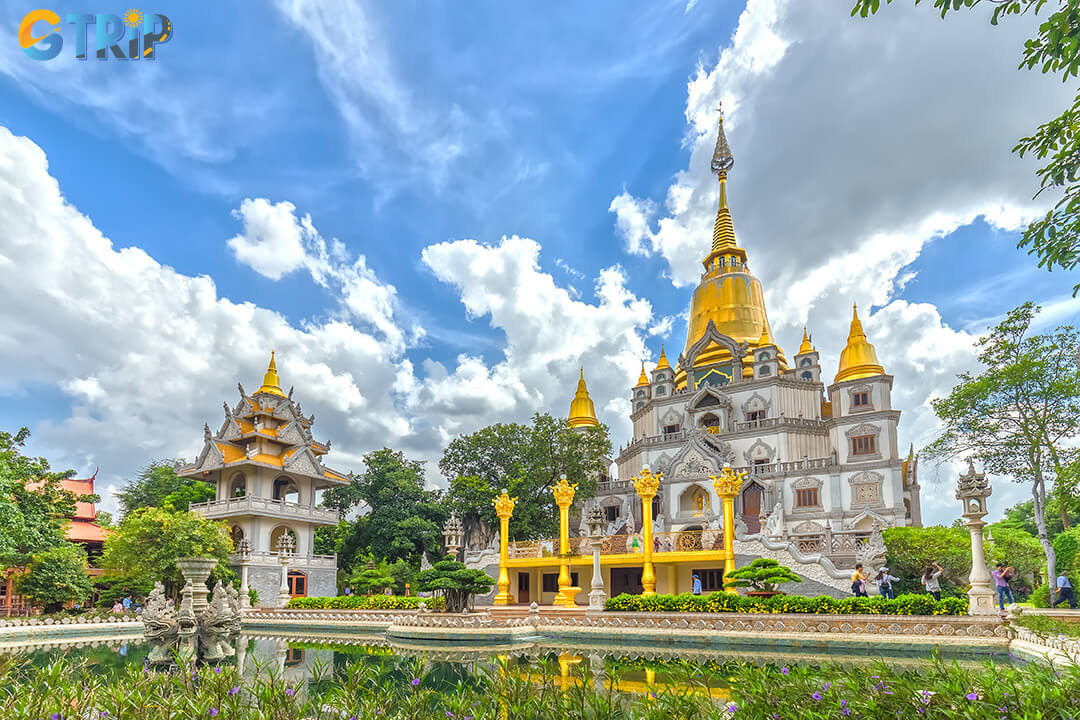
The 56-meter Gotama Cetiya stupa, Vietnam’s largest, stands as Buu Long Pagoda’s radiant heart, blending sacred relics with serene architectural grandeur
Things to do at Buu Long Pagoda
A visit to Buu Long Pagoda offers a peaceful escape from bustling Saigon. Beyond its stunning architecture, it invites you to slow down, breathe, and reconnect. If reflection, photography, or a quiet afternoon, it’s one of Thu Duc’s most rewarding experiences.
Pay homage at the Gotama Cetiya stupa and Buddha relics
The most profound activity at Buu Long Pagoda is engaging in its primary spiritual purpose: paying respect at the Gotama Cetiya stupa. Remember to check the stupa's specific opening hours to ensure you can go inside. Before entering, you must remove your shoes as a sign of respect. Once inside, you'll be enveloped by a hushed, solemn atmosphere. The air is cool and still, and the space is designed to inspire quiet contemplation. Devotees circle the central reliquary in silent prayer, and you are welcome to join them or simply stand in quiet reflection. Observing the profound devotion of others and taking a moment to connect with the spiritual energy of the place is a powerful and humbling experience. It is the core reason for the pagoda's existence and the most meaningful part of any visit.
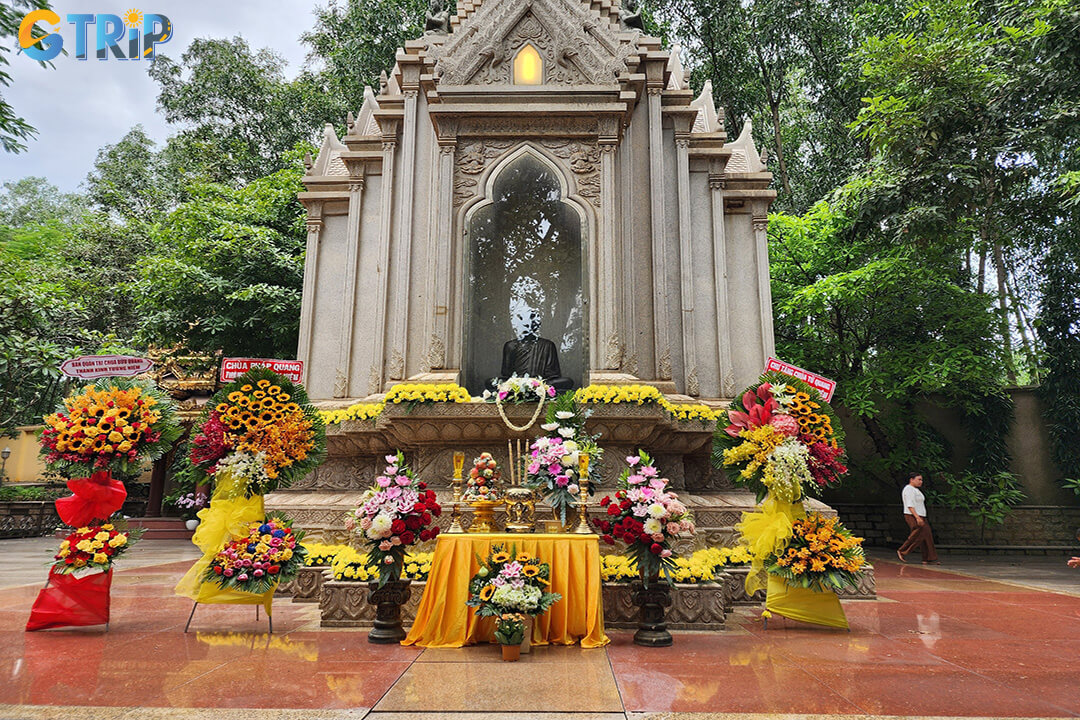
Paying respect at the Gotama Cetiya stupa, offers a serene, humbling experience of quiet reflection and deep devotion
Enjoy the serene, incense-free atmosphere
One of the most unique and refreshing aspects of visiting Buu Long Pagoda is its incense-free environment. This reflects Theravada tradition, which values sincere devotion and mindfulness over material offerings. This practice has a wonderful side effect: the air throughout the complex is incredibly fresh, clean, and free from the thick smoke that often characterizes other temples in Asia.
The absence of constant chanting over loudspeakers and the murmurs of visitors create an atmosphere of genuine tranquility. This makes the pagoda an ideal place for meditation, quiet reflection, or simply unwinding from the sensory overload of the city. You can find a quiet bench by the lake or a shaded spot under a tree and simply be present. The focus on inner sincerity over outer ritual fosters a truly relaxing and restorative environment, making it a genuine sanctuary for the mind and soul. This commitment to peace is a key part of what makes visiting Buddhist temples in Vietnam such a diverse and interesting experience.
Stroll through the grounds and take photos
Buu Long Pagoda is, without a doubt, a photographer's paradise. The combination of its unique architecture, vibrant colors, and lush, well-manicured grounds provides endless opportunities for stunning shots. GTrip always brings their cameras here, as every angle offers a new and beautiful perspective. The main subject, of course, is the great Gotama Cetiya stupa, which looks spectacular against a clear blue sky, especially when reflected in the turquoise waters of Ho Ban Nguyet lake.
Wander the winding paths around the campus. Explore the different prayer halls, admire the intricate carvings, and capture the contrast between the white walls and the verdant green of the surrounding trees and gardens. The vibrant colors, the symmetry of the architecture, and the peaceful setting make it an ideal spot for both landscape and portrait photography. Even if you're just using your phone, it's hard to take a bad picture here. Remember to be respectful and avoid taking photos in areas where it is prohibited, particularly inside the main prayer halls during ceremonies.
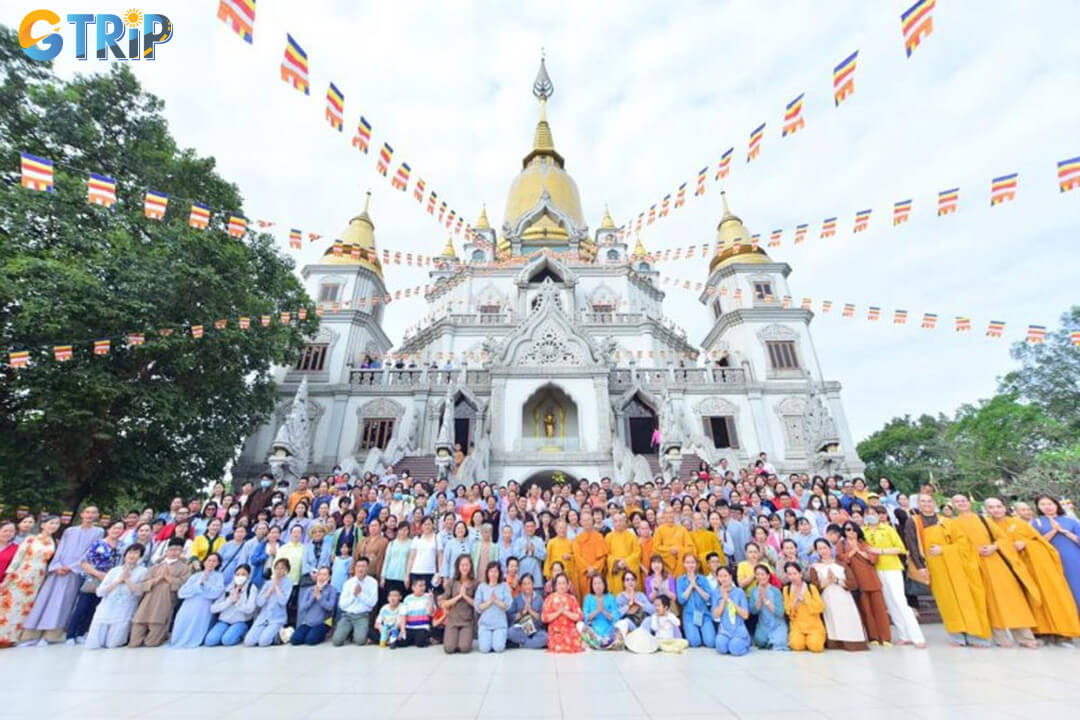
A paradise for photographers, Buu Long Pagoda offers breathtaking shots of its golden stupa reflected in turquoise waters, lush gardens, and elegant symmetry
Savor light vegetarian cuisine
After a peaceful stroll through the pagoda grounds, you can nourish your body as well as your soul at the on-site vegetarian food court. Tucked away in a simple, clean area, the eatery offers a small but delicious selection of classic Southern Vietnamese vegetarian (chay) dishes. The food is light, flavorful, and incredibly affordable, providing an authentic taste of local Buddhist cuisine.
A must-try dish is the vegetarian crab noodle soup (bun rieu chay), a flavorful and hearty soup that perfectly mimics the traditional version using tofu and vegetables. You can also find other simple rice and noodle dishes, as well as refreshing drinks like fresh sugarcane juice or herbal teas to help you cool down. Eating here is part of the complete pagoda experience. It offers a moment to sit down, relax, and enjoy a simple meal in a peaceful setting, all while supporting the pagoda's community.
How to get to Buu Long Pagoda
Buu Long Pagoda is located approximately 20 kilometers northeast of Ho Chi Minh City’s center, making it an easy half-day trip. While it may seem a bit far, getting there is straightforward with several convenient options.
- Car/Motorbike: This is the most flexible way to visit. From the city center, the most direct route is to take the Vo Nguyen Giap Street heading towards Thu Duc City. Continue past the Saigon Hi-Tech Park, then turn right onto Le Van Viet Street. From there, turn right onto Nguyen Van Tang Street, and finally, make a left onto Nguyen Xien Street. The pagoda will be on your left at number 81. The journey typically takes 45-60 minutes depending on traffic. Parking is available on-site.
- Taxi/Ride-hailing: For a hassle-free journey, using a ride-hailing app like Grab (for cars or motorbikes) or a traditional taxi service like Mai Linh or Vinasun is an excellent choice. Simply input "Buu Long Pagoda" or "Chua Buu Long" as your destination. We also recommend trying XanhSM, Vietnam's all-electric taxi service, for a comfortable and eco-friendly ride. The cost will be reasonable, and it saves you from navigating traffic.
- Bus: For the most budget-friendly option, you can take a public bus. Several bus routes head towards the general area of Thu Duc City (formerly District 9). You can take a bus that stops near the Suoi Tien Theme Park or along the Hanoi Highway, and from there, take a short motorbike taxi (xe om) ride the rest of the way to the pagoda. This option is best for adventurous travelers comfortable with public transport.

Located about 20 km from central Ho Chi Minh City, Buu Long Pagoda is easily reachable by car, motorbike, taxi, or bus
Other famous attractions in Ho Chi Minh City
While Buu Long Pagoda is located in a quieter, more residential part of Ho Chi Minh City, a visit can be integrated into a larger day of exploration. The other major tourist landmarks are located back in the city center, about a 45-60 minute drive away, so it's best to plan your itinerary accordingly. You could start your morning at the pagoda for the best light and fewest crowds, then head back into the city center for an afternoon of sightseeing.
- Notre Dame Cathedral of Saigon: An iconic landmark of French colonial architecture, this stunning cathedral stands in the heart of District 1. Its twin bell towers and red-brick facade make it a must-see.
- Saigon Central Post Office: Located directly across from the cathedral, this Gustave Eiffel-designed post office is a functioning piece of history, with grand arches, vintage phone booths, and a massive map of old Saigon.
- Independence Palace (Reunification Palace): A time capsule of 1960s architecture and the site of the dramatic end of the Vietnam War in 1975. You can tour the presidential offices, reception rooms, and underground war bunkers.
- Ben Thanh Market: The city's most famous market, a bustling hub where you can shop for everything from souvenirs and clothing to fresh produce and delicious street food. It’s a fantastic place to immerse yourself in local life.
- Tan Dinh Church (The Pink Church): A surprisingly vibrant and beautiful church in District 3, famous for its striking all-pink exterior. It’s a wonderful spot for photos and a unique example of religious architecture in the city.

Start your morning at the peaceful Buu Long Pagoda, then head back to central Saigon to explore iconic landmarks
Practical tips for visiting Buu Long Pagoda
To ensure your visit to Buu Long Pagoda is respectful, smooth, and enjoyable, it's important to be mindful of the customs and rules of this sacred place. As your trusted travel guides at GTrip, we’ve compiled these essential tips to help you prepare.
- Dress code: This is the most important rule. Dress modestly and respectfully. Your clothing should cover your shoulders and knees. Avoid wearing shorts, short skirts, tank tops, or revealing outfits. This applies to both men and women. If you are not dressed appropriately, you may be denied entry into the main stupa and prayer halls.
- Shoe etiquette: Always remove your shoes before entering any indoor prayer area, including the main hall and the Gotama Cetiya stupa. There are designated shelves outside the entrances where you can leave your footwear.
- Maintain silence: Buu Long Pagoda is a place of worship and meditation. Speak softly and keep conversations to a minimum. Avoid loud noises, turn your phone to silent, and be mindful of monks and devotees who are there to pray.
- Respect photography rules: While photography is encouraged in the outdoor areas, be aware of restrictions. It is often forbidden to take photos or videos inside the main prayer halls, especially of the central altars or during ceremonies. Always look for signs or ask for permission if you are unsure.
- Keep it clean: Help maintain the pristine beauty of the pagoda grounds. Do not litter. Use the provided trash bins for any waste.
- Stay hydrated: The weather in Ho Chi Minh City is often hot and humid. While there are drinks available for purchase, it's a good idea to bring a bottle of water with you to stay hydrated as you explore the expansive grounds.
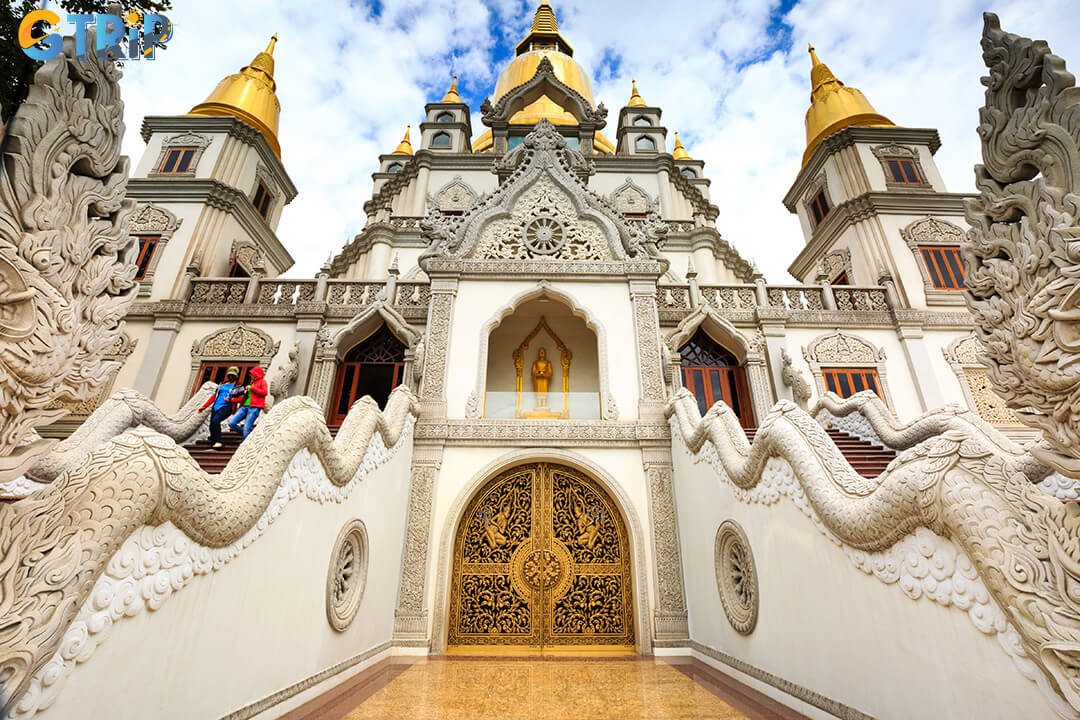
Follow these essential tips for a respectful and enjoyable visit to Buu Long Pagoda
Buu Long Pagoda is a masterpiece of peace, faith, and cultural harmony in Ho Chi Minh City. With its stunning Thai-inspired architecture, serene lakeside setting, and sacred atmosphere, this pagoda offers visitors a rare chance to step away from Saigon’s bustle and experience true spiritual calm. If you come to admire its golden stupa, reflected by the Half-Moon Lake, or capture its tranquil beauty, your journey here promises a deeper connection to Vietnam’s living Buddhist heritage. Plan your visit with GTrip - Vietnam Travel Agency, your trusted companion for discovering Vietnam’s most inspiring destinations.

